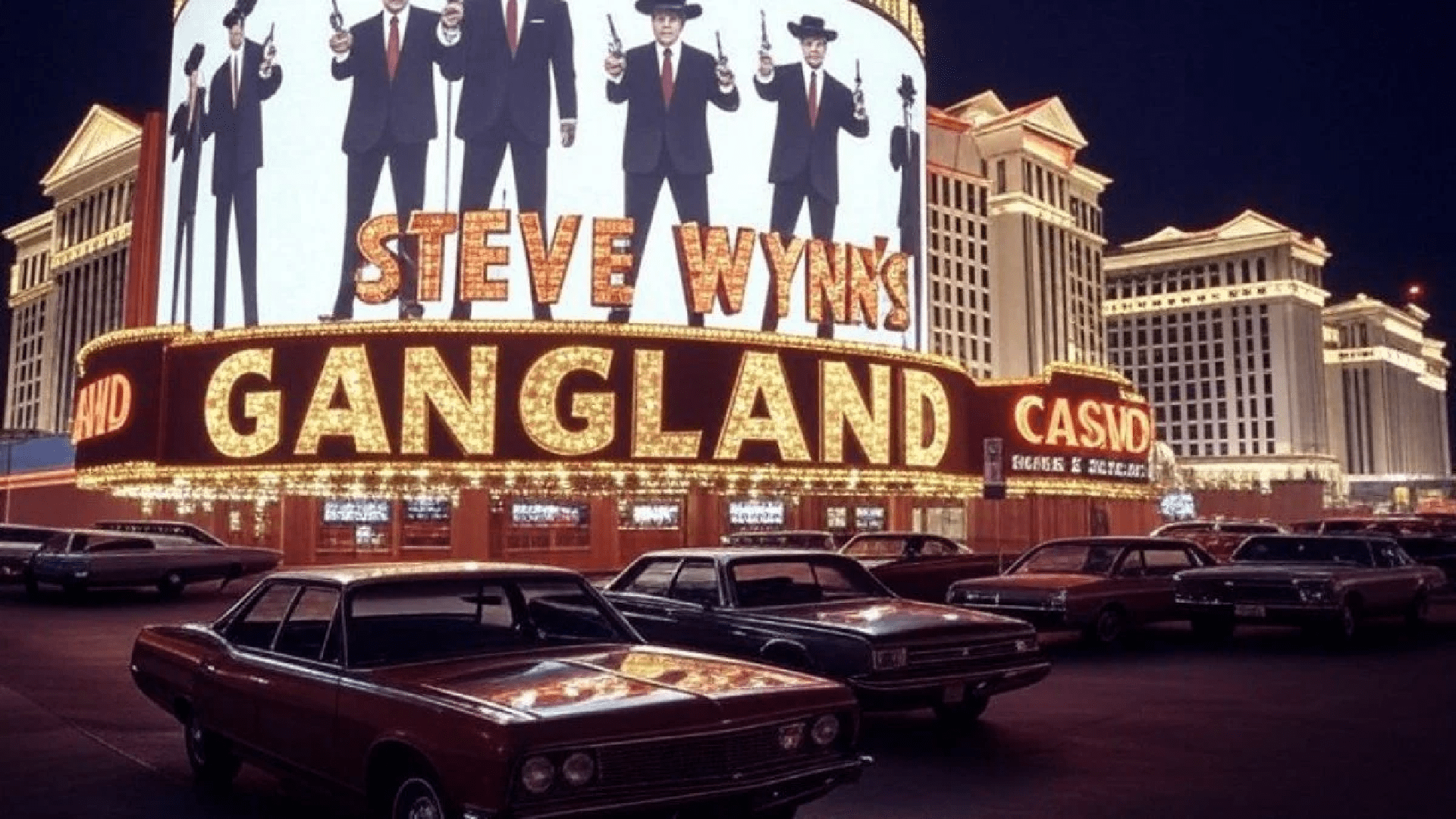
In the almost three years since we started this weekly Casino.org series, we’ve explored numerous outrageous tales that we understood had to be fabrications.
We were correct most of the time. This is how we dispel commonly held Vegas myths such as the bodies interred within Hoover Dam, the casino that Howard Hughes acquired solely to dim its lights so he could get some sleep, and, naturally, the additional oxygen that casinos release onto their gaming floors to keep gamblers alert. (Anyway, we attempted to lay them to rest. Numerous individuals continue to have faith in them.
Nonetheless, certain stories of this kind ultimately turn out, quite astonishingly, to be true.
If you didn't catch our initial release, take a look at "Vegas Near Myths Pt. It seems like you provided "1," as the text to paraphrase. Could you please provide a longer passage or additional context? I'd be happy to help with that!
Steve Wynn’s Mob Ties
In 1971, Steve Wynn was a 29-year-old slot manager at the Frontier. However, prominent banker E. Parry Thomas developed an affinity for him. He observed something.
Thomas organized for Steve Wynn to buy a small piece of land adjacent to Caesars Palace. It was under the ownership of Howard Hughes, who had been renting it to the casino resort for parking, and it was the final parcel of land Hughes owned on the Strip.
The lot was just 100 feet by 1,500 feet, barely sufficient for constructing anything valuable. Thus, Wynn's acquisition cost of $1.2 million was a risk. However, it was worthwhile due to a massive deception.
Wynn asserted that he was intending to build a new motel and casino on his finger-shaped property, unlike anything Las Vegas had experienced previously. And none other than Betty Willis, the designer of the Welcome to Fabulous Las Vegas sign, was commissioned to create the rendering. Wynn held a press conference to reveal it together with his ambitious plans.
In her 2019 book, “Eyes in the Sky,” writer Karen Leslie illustrated Wynn’s idea: “A humorous representation of a gangster-style casino, featuring vintage Packards and animated figures in fedoras wielding machine guns, resembling something straight out of Chicago.”
Wynn answered journalists' inquiries as if he were utterly serious, even when he spoke its name … Gangland!
Keep in mind that this was still the early 1970s, meaning the mob was not a marketing strategy used for museums and bus tours to evoke nostalgia for earlier times. It was an integral aspect of Vegas' present, and would oversee the management at multiple casinos for nearly another ten years.
Caesars Palace CEO Bill Weinberger was extremely frustrated about Wynn’s acquisition, as he believed that Hughes had granted Caesars the first opportunity to purchase the property. At this point, he had even greater cause to be furious.
Even if Weinberger realized Wynn was bluffing — and since he was an entirely new player on the Strip, it was uncertain if he could know for certain — he simply couldn’t risk it. He could never permit such an offensive structure to be constructed next to his opulent resort — particularly something that reminded everyone that Caesars Palace was financed with mafia funds (through the Teamsters Pension Fund) in 1966.
On October 27, 1972, Weinberger almost doubled Wynn's investment, yielding to his firm demand of $2.25 million.
The young fraudster invested his earnings to acquire a majority stake in the neglected Golden Nugget Las Vegas. And that's how Steve Wynn began his Las Vegas empire.
FedEx's Obligation to Vegas Blackjack
FedEx commenced its operations in April 1971, utilizing $4 million that founder Fred Smith had received as an inheritance from his father. His concept involved developing a unified air and land delivery network that transported packages nationwide to a central hub, where they would be sorted and subsequently flown or driven to their final destinations.
However, swiftly increasing fuel expenses caught the startup, then referred to as Federal Express, off guard. By 1974, it was incurring losses of $1 million each month. It appeared that bankruptcy was the sole choice.
While awaiting his flight back to Memphis from Chicago, where the General Dynamics board rejected his funding request, Smith spontaneously boarded a plane to Vegas.
At an unnamed casino, he transformed the company's final $5,000 into $27,000 at a blackjack table, which ultimately rescued the company.
At first, this seemed to us like a legend. How can $27,000 realistically lift a company out of millions in debt?
The reason is that Smith utilized it to settle FedEx’s outstanding $24,000 fuel invoice. This enabled the company to sustain operations long enough for Smith to secure an additional $11 million from its initial investors.
The Sinatra Jokes That Almost Led to Jackie Mason's Downfall
In November 1966, Jackie Mason performed at the Aladdin’s supper club, featuring Joe E. Lewis, a friend of Frank Sinatra, as the opening act. His performance featured humor concerning the age gap between Frank Sinatra, 50, and his 21-year-old wife, actress Mia Farrow.
“Frank soaks his dentures and Mia brushes her braces,” Mason said. “Then she takes off her roller skates and puts them next to his cane. He peels off his toupée and she unbraids her hair.”
After hearing the jokes, likely from Lewis, Sinatra attended the performance with a group of friends and started heckling Mason, referring to him as a “creep” and a “bum.”
“If you need attention so much, you should be seeing a doctor, not my show,” Mason replied before the crooner and his cronies stormed out.
Sinatra dispatched a pair of goons to Mason's dressing room to warn him to stop the wisecracks or face consequences.
Mason ignored their suggestions. A few nights afterwards, he got a mysterious call advising him to alter his attitude — if he cared for his life.
Following another night or two of Sinatra songs, three gunshots were discharged through the front door of Mason’s room at the Aladdin. At that moment, he was in the bathroom. The bullets were discovered lodged in his mattress.
Mason stated that when he informed Las Vegas police about the incident, they declined to look into it.
“I have no idea who it was who tried to shoot me,” Mason said in his act afterward. “After the shots were fired, all I heard was someone singing, ‘Doobie, doobie, doo.’”
Sinatra seemingly ended up having the final chuckle. On February 13, 1967, a bully with brass knuckles broke Mason’s nose and cheekbone outside his Miami apartment.
Pall within the Family
The initial and final individuals to perish while constructing the Hoover Dam were a dad and his child.
Prior to starting our investigation for this story, it appeared to be the most certain myth we had ever confronted. Yet again, astonishingly, the details were verified.
Prior to the initiation of dam construction, John Gregory Tierney was one of the surveyors exploring potential sites along the Colorado River. In 1921, Tierney fell off the raft he was on and drowned in the powerful current.
Fourteen years later, Tierney's son, Patrick, was the last construction casualty on the dam when he fell from the recently finished structure.
And, as if that weren’t strange enough, both father and son passed away on Dec. 20. Their names are engraved in raised metal on a plaque close to the dam.
Check Out This Bonus

Luck Land
- Relatively low wagering requirements on bonuses
- Attractive instant-play software
- Quick withdrawals
New players only 18+. Min deposit £20. 40x wagering applies to match up bonus . Offer valid for 1 week. 50 Spins on Starburst. 40x wagering applies to Spins.
